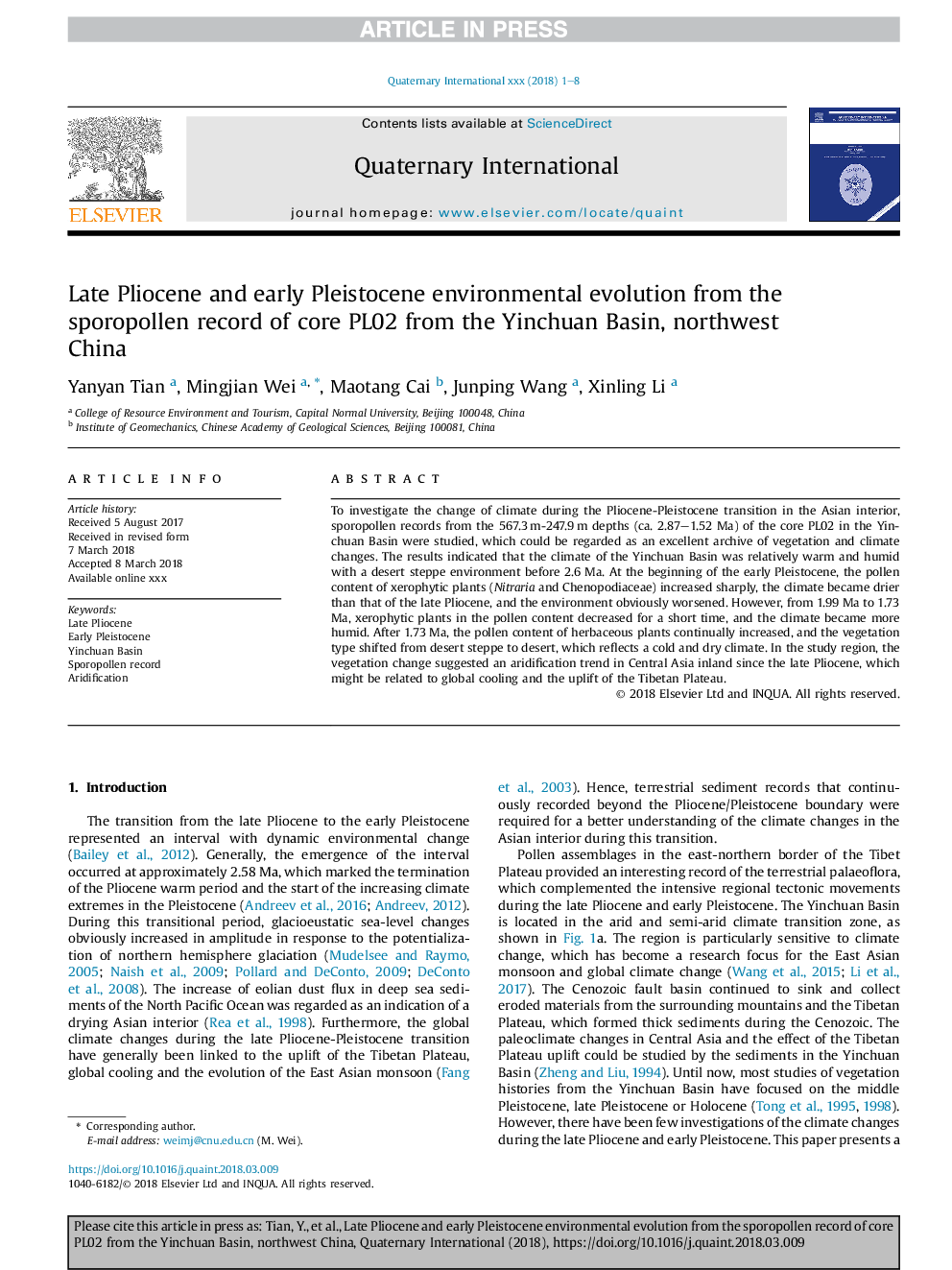| Article ID | Journal | Published Year | Pages | File Type |
|---|---|---|---|---|
| 7449579 | Quaternary International | 2018 | 8 Pages |
Abstract
To investigate the change of climate during the Pliocene-Pleistocene transition in the Asian interior, sporopollen records from the 567.3â¯m-247.9â¯m depths (ca. 2.87-1.52 Ma) of the core PL02 in the Yinchuan Basin were studied, which could be regarded as an excellent archive of vegetation and climate changes. The results indicated that the climate of the Yinchuan Basin was relatively warm and humid with a desert steppe environment before 2.6 Ma. At the beginning of the early Pleistocene, the pollen content of xerophytic plants (Nitraria and Chenopodiaceae) increased sharply, the climate became drier than that of the late Pliocene, and the environment obviously worsened. However, from 1.99 Ma to 1.73 Ma, xerophytic plants in the pollen content decreased for a short time, and the climate became more humid. After 1.73 Ma, the pollen content of herbaceous plants continually increased, and the vegetation type shifted from desert steppe to desert, which reflects a cold and dry climate. In the study region, the vegetation change suggested an aridification trend in Central Asia inland since the late Pliocene, which might be related to global cooling and the uplift of the Tibetan Plateau.
Related Topics
Physical Sciences and Engineering
Earth and Planetary Sciences
Geology
Authors
Yanyan Tian, Mingjian Wei, Maotang Cai, Junping Wang, Xinling Li,
